How to Assess Business Ideas & Find the Most Promising Opportunities
How to assess business ideas, toss out ones that won't work, and focus on developing a well-conceived craft business idea with a real chance for success.
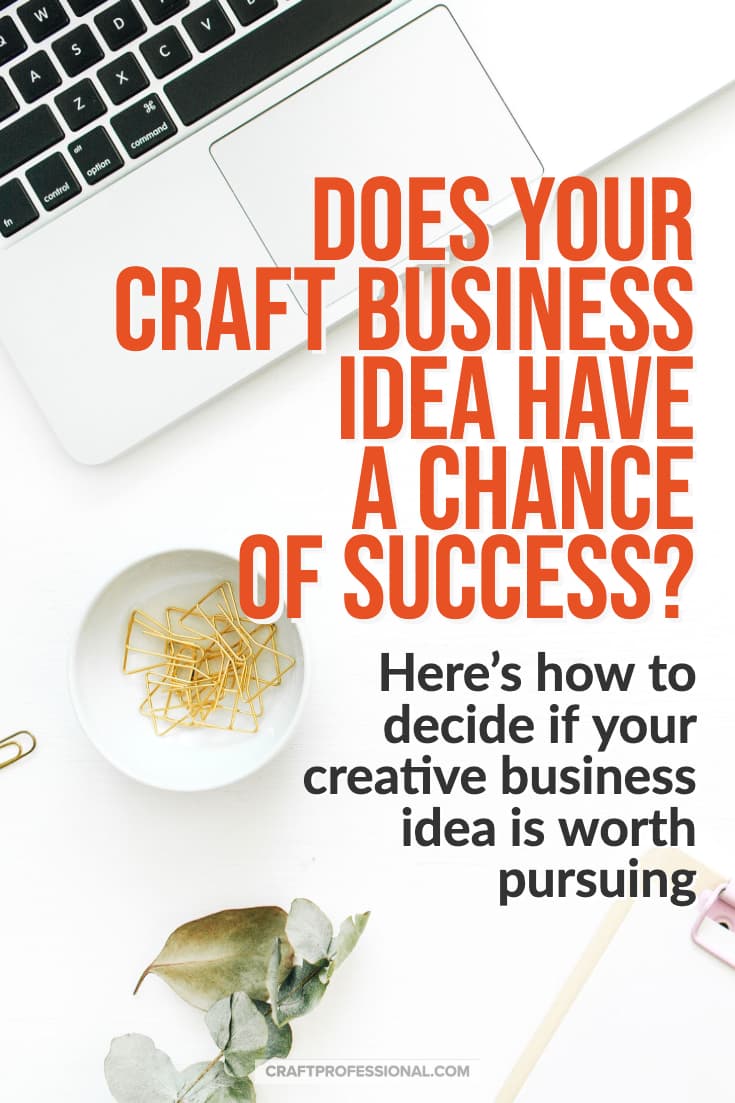
If you're a creative type, I'm going to bet that you have plenty of ideas. You probably have ten new ideas for your craft business before breakfast.
The problem with ideas, though, is they always appear lovely, compelling and exciting on the surface. We often fall in love at first sight with our ideas. But as a solopreneur, you only have time to pursue a few of your very best ideas.
It's necessary to assess business ideas - to really understand them, and challenge them before falling in love with them. Before you commit precious time and financial resources to bring a new idea to fruition, you need to make sure it passes a few tests.
I've been through the process myself and, when I worked as a career advisor, I helped clients through the process of assessing life-changing ideas many times. It really is quite liberating to look at an idea, examine it from all sides and determine if it is truly as bright, shiny and promising as it appears at first glance.
When you put your business ideas through a testing process before you commit to them, you develop a clearer understanding of what you're diving into.
You can get to work on a project knowing you've thought it through carefully and it has a good chance for success. Or, you can feel good about letting go of a project with the knowledge it isn't the right opportunity for you right now.
How to Assess Business Ideas
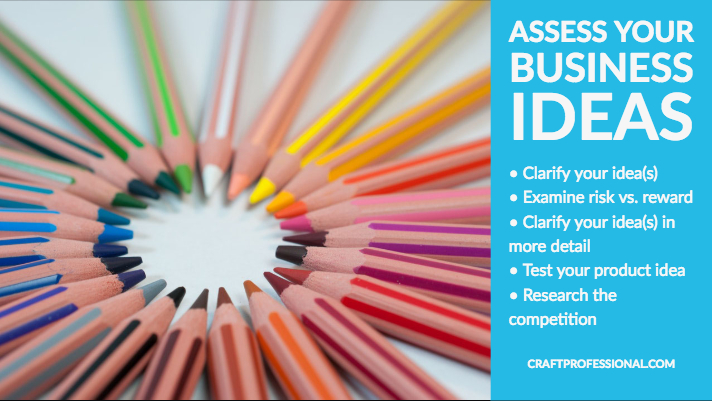
This topic is big. So, to help avoid information overload, I've broken it into a series of three articles. I'm going to boil the topic down to some key elements that are most relevant to craft business owners.
In this first article you'll work through the initial phase of assessing your idea. We'll examine how to:
- clarify your idea(s)
- examine risk vs. reward
- clarify your idea(s) in more detail
Then, in the next two articles in the series you'll learn about:
1. Clarify Your Ideas
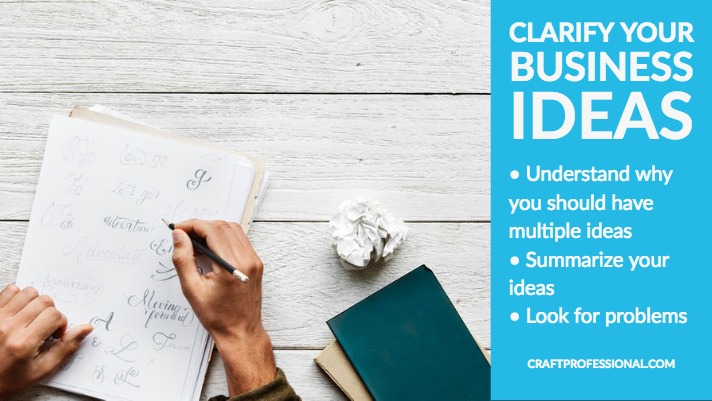
You need to clarify your product idea, so you have a clear picture of the project you have in mind. You can't assess something effectively unless you know the exact scope of the project you're considering.
To clarify your idea(s) you're going to:
- Understand why you really should have multiple ideas
- Summarize your ideas
- Look for problems
Understand Why You Really Should Have Multiple Ideas
Ideally, you will come to this process with more than one idea in mind.
Why?
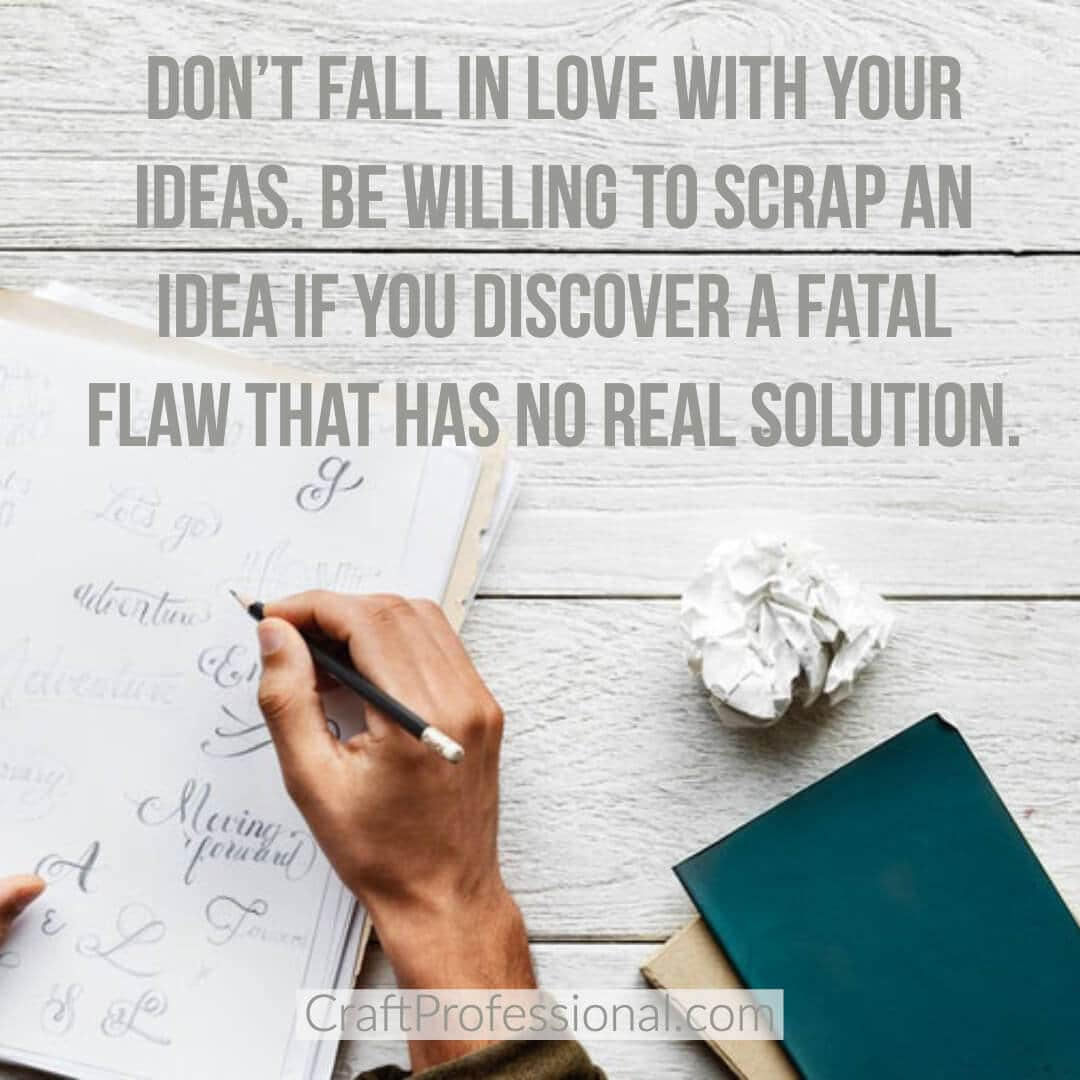
If you only have one idea, you risk falling in love with that idea. With only one idea, you don't leave yourself with any other options. You run the risk of hanging on to that idea even if evidence shows that it might not be the best choice for your business.
You need to be ready to scrap an idea if you discover a deal-breaker problem with your concept. It's easier to let go of one option if you have other possibilities in mind.
It is essential to get yourself into a mindset in which you are not in love with your ideas, and you are willing to scrap one of them if you discover a fatal flaw that has no real solution.
Summarize Your Ideas
You need to understand your ideas fully, so you can assess them effectively.
When we first come up with ideas they are not fully formed. We have a general impression of how something might work, but, until we think through the idea systematically, we lack necessary details and information required to make an informed decision.
Writing a summary of each of your business ideas will help you develop the clarity you need to make more informed decisions.
Brainstorm what the product is, and note the special features or benefits of the product. Answer questions like:
- How you will make the item?
- What raw materials and tools will you require?
- Do you have access to those raw materials and tools, or will you need to source out and purchase them?
- What skills will you require to develop your product idea?
- Do you have those skills, or will you need to invest some time and possibly money developing those skills?
- Who is your target customer?
Don't invest too much time in research at this stage.
You don't need to do a huge amount of research at this point. For the most part, you can just brainstorm based on what you already know.
If you need to do a quick search for something like the cost of a raw material you use, that's fine, but don't get mired in extensive research right away.
You don't have to find the best supplier with the best terms, for example. Get ballpark numbers that are close enough to allow you to make smart decisions.
Work on developing an overview, so you can clarify in your mind what it is you are considering.
Look for Problems
Now look for problems, both ones you can solve and ones that are deal-breakers.
It might feel early to start looking for problems, but really, it's better to find problems early on, before you've invested a lot of time and money into developing an idea.
Looking for problems early will help you solve them and make your product better. If the problem turns out to be an unsolvable fatal flaw, you'll be able to move forward to a more viable idea without investing a lot of resources into an idea that won't work.
Ask yourself:
- Do you notice anything that would be problematic with your product?
- Do you have the time, money, and skill required to develop your idea?
- Do you have any concerns about selling your product to your target market?
Make note of any problems. Be sure to red flag any ideas that have problems that are of real concern to you. You'll need to decide if these problems are deal breakers - something you simply cannot overcome with the resources you have available, or if they are solvable opportunities to make your product better.
2. Assess Potential Risks and Rewards for Your Business Idea
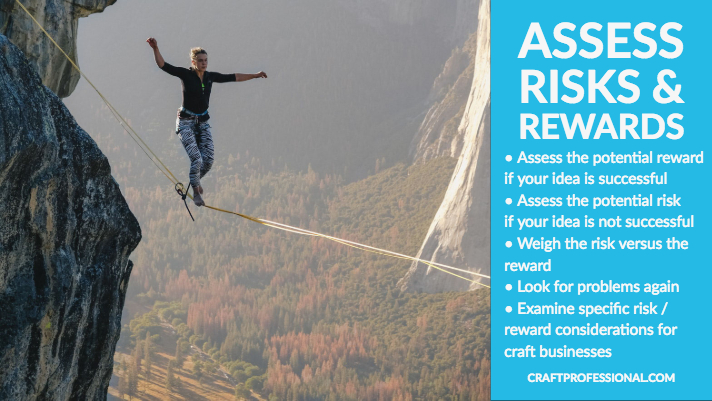
Any new project you take on carries risk. Even if the financial risk is low, you'll risk spending your time on something that might not produce the results you hoped for.
If you're going to risk spending your resources on developing a new product, it's wise to fully understand those risks. Also, you need to have a good understanding of the potential rewards if your new product is successful to help determine if the risk is worthwhile.
To get a better sense of the risks and rewards inherent in developing a new product, we'll:
- Assess the potential reward if your idea is successful
- Assess the potential risk if your idea is not successful
- Weigh the risk versus the reward
- Look for problems again
- Examine specific risk / reward considerations for craft businesses
Assess the potential reward if your idea is successful
We often think about assessing the risk of taking on a project that might fail. But do we ever think carefully about assessing the potential for reward?
In assessing the reward, you're asking yourself how much your business could reasonably benefit from the development of your product idea.
That kind of assessment will help you decide if the project is worth your time, or if you'd be better off spending your time pursuing another project. As a solopreneur, your time is almost certainly your most scarce and precious commodity. You need to use it well.
Ask yourself:
- How much income can I expect to make from a product?
- How much will I make per customer?
- How many customers will I likely have?
- Does my idea encourage repeat customers?
This information can be VERY tough to know, especially if you are just starting out. You might have to use your best educated guess.
If you have an established business, you'll likely have a better sense of the answers to these questions.
For example, if you have your own website, or an Etsy shop, you might have an idea how many items you typically sell in a given time frame or based on a certain number of visitors to your site. Or if you've sold at craft shows before, you might have a good idea how much you typically make depending on the attendance numbers at the show.
Often, for new business owners, this assessment comes down to making an educated guess, but it's still helpful to think through the reward potential.
In examining the potential for reward, you're trying to determine if the reward is great enough for you to invest your resources in the project.
Assess the potential risk if your idea is not successful
Here come some of the big questions you need to ask yourself before developing an idea.
Consider:
- How much might you lose if the product is not a success?
- What is the likelihood of not succeeding?
Consider the amount of money you will need to spend to develop the product. How much income will you need to invest in things like raw materials, tools, skill development, and marketing opportunities.
Consider loss of time when you consider risk. Your time is worth something. You can even give yourself a specific dollar per hour rate and determine the approximate amount of time you'd spend in activities like product development, production, sourcing materials, skill development.
Think about time you'll spend developing and creating the product, launching, marketing, or providing customer care. All of that time carries value.
How do you define high risk vs. low risk?
There are actually specific mathematical formulas you can use for assessing risk and reward.
I debated whether to include them here but decided against it because they can get complex. Also often, when you're just starting out in a craft business, you simply don't have the information you need to make the numbers particularly accurate.
More Information: If you're curious about learning more about risk / reward ratios start here.
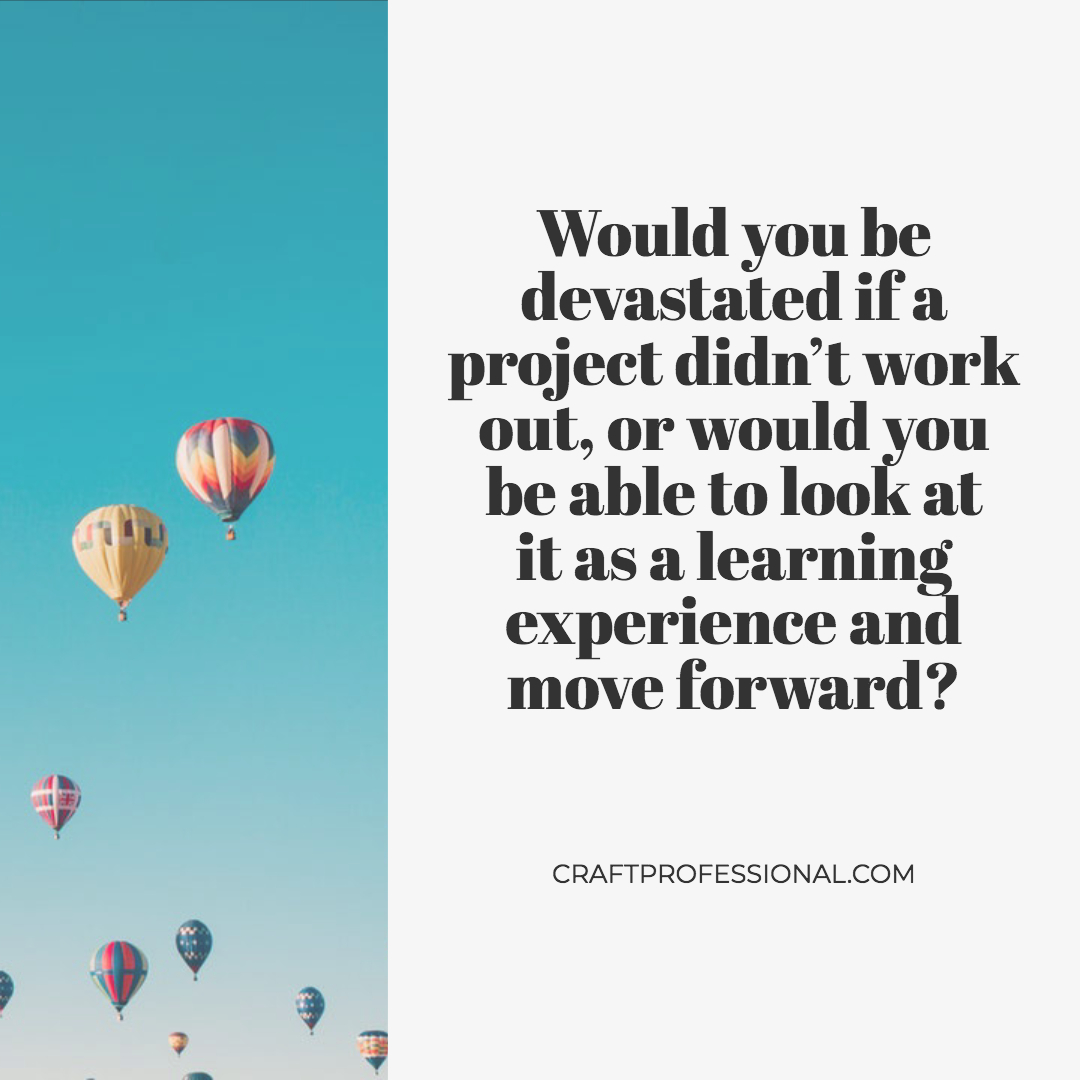
Instead of formulas, we're looking at risk on a more general, broader scale.
You want to try to get a good grasp on the potential reward as well as potential risk of developing a new product. Then you'll weigh these factors against each other.
Is a project too risky?
The answer to that question will be different for each person. The amount of time and money you can afford to risk on developing an idea will depend entirely on your own personal and financial realities.
To determine how much risk is reasonable for you, consider this question:
Would you be devastated if a project didn't work out, or would you be able to look at it as a learning experience and move forward?
Drawing that line of acceptable risk will be something you'll need to decide for yourself.
Weigh the risk versus the reward
Looking at the notes you made about the rewards and risks of each idea, consider the following:
If something is lower risk:
- It's easier to give it a shot. You don't have much to lose
If it is higher risk:
- The potential reward should be high as well to balance the risk
- You must do extra-thorough research, and really look carefully for problems in your plan
- You must be extra diligent to ensure you have the resources to pull it off
- If you don't have the resources to pull of a high-risk idea, but you still think it's a good idea, consider putting it aside for later. It doesn't mean you'll never develop the idea; you just might need to develop a different idea first and wait until you're in a better position to work on your high-risk idea in the future.
Look for Problems Again
You already looked for problems with your ideas once. However, now that you've assessed risk and reward, you have more information to be in a better position to assess problems.
Ask yourself:
- Do I see any problems emerging that I didn't notice before?
- What about problems that I've already flagged? How does this new information impact those problems?
- Can I solve the problem and make my product better?
- Did I discover any deal-breaker problems here?
Don't be so in love with your idea that you ignore a problem. Don't assume you have to go forward with an idea just because you've researched it to this point.
You are a creative person. If you discover an idea you are researching has a fatal flaw, you will come up with other ideas.
At the same time, don't drop an idea immediately just because you discover a potential problem. Work through it. Look for solutions. The solutions you find here may really differentiate your product from your competitors.
Examine specific risk / reward considerations for craft businesses
When we talk about potential risk, it's good to be a craft business owner.
Craft businesses are generally low risk enterprises.
Certainly, your time and financial risk will vary depending on your process. However, you can often start this type of business on a part time basis.
There's no need to give up your day job. Plus, there's a good chance you have equipment and some raw materials on hand because craft businesses often begin with an area of specialization that is already a hobby.
When we talk about potential reward, craft business owners need to be careful.
If you are making products by hand, that means the growth of your business (your reward) is limited by the time you have to create your items.
Depending on what your goals are, that limitation might be fine with you. It's not an automatic deal-breaker, but it is something to keep in mind.
Ask yourself:
- Considering the time it takes to make an item, and the profit on each item, do the numbers work?
- Will the reward meet your expectations?
- Are there ways to change your product or your production process to increase the potential reward?
3. Clarify Your Ideas in More Detail

So far you have:
- clarified your ideas
- looked for problems
- and assessed and weighed potential reward and risk for each of your ideas.
At this point, you might be ready to let go of an idea or two.
If you've found that one of your ideas has a very clear problem that's a deal-breaker, it needs to go.
Similarly, if you've discovered that you're just not in a position to develop a specific type of product, you might want to put that idea on the shelf for future consideration.
Maybe you're just not excited about an idea anymore. After thinking it through in more detail, perhaps the reward of developing the idea just doesn't seem worth the work and risk involved.
Whatever the reason, if you've discovered that an idea really isn't viable, feel free to drop it at this stage, and move on to something with more promise.
Now that you have more information, ask yourself some broad questions:
- How does this idea fit with my goals and values?
- Can I make this idea work with my current resources?
- Does this idea have a real chance for success?
Expand on the Ideas That Made the First Cut
I'm going to assume you have an idea or two that have survived the initial assessment. Now it's worthwhile to invest some time in fleshing out the ideas in more detail.
Describe your product in thorough detail.
Imagine your target customer using your product.
Ask yourself:
- How does she interact with it?
- How does she feel when using your product?
- What is her objective (what is she trying to get from using your product)?
- Does your product successfully deliver on that objective?
- What you can do to improve on the experience?
Connecting your customer with your product in your mind in this way can help you improve the design, find and solve problems, and find benefits you might not have considered.
Do some more research.
Next, do some simple, initial research.
There's no need to spend hours on information that might be tough to find, but make sure you have all of the basics you need to know including things like:
- cost of supplies
- cost of equipment and tools
- access to equipment you might need
- skill required to create your product
- shipping considerations
- time required to make your product
- any other important considerations that are relevant to your idea
If, for example, your product requires expensive raw materials or a long time to create each item, but the typical selling price is low, you need to know these things (and develop a solution) before you commit to developing the product.
Sometimes craft professionals will comment that they can't sell their product for a price that factors in all of their time and materials costs. If your goal is to build a business (as opposed to selling a few crafts for fun), and you can't sell your product for a price that reflects your time and materials costs, then you have a flaw in your product that needs to be solved.
Have a very honest conversation with yourself about whether you think people would actually buy your product at a price that allows you to make a reasonable profit.
Be willing to let go of an idea if it doesn't pan out. Yes, you have invested some time in assessing the idea. But if it's really not workable, letting go of that idea, will save your time, money, and pain. You can move on more quickly to an idea that will work.
Summary
We've covered a lot of ground here. To start with a few general product ideas and work through a process to understand your ideas better and eliminate any that don't make the cut you'll need to:
Clarify Your Ideas
- Understand why you really should have multiple ideas
- Summarize your ideas
- Look for problems
Assess Potential Risks and Rewards for Your Craft Business Idea
- Assess the potential reward if your idea is successful
- Assess the potential risk if your idea is not successful
- Weigh the risk versus the reward
- Look for problems again
- Examine specific risk / reward considerations for craft businesses
Clarify Your Idea(s) in More Detail
Once you get your ideas narrowed down to a single winner, it's time to test your product idea more thoroughly.
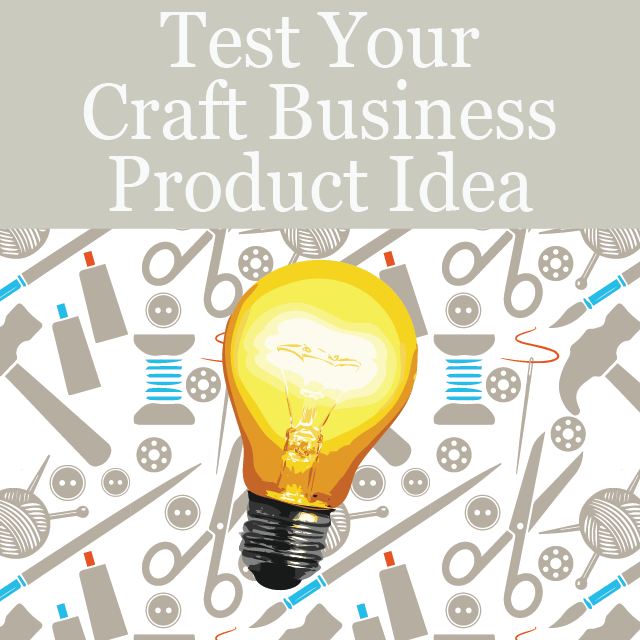
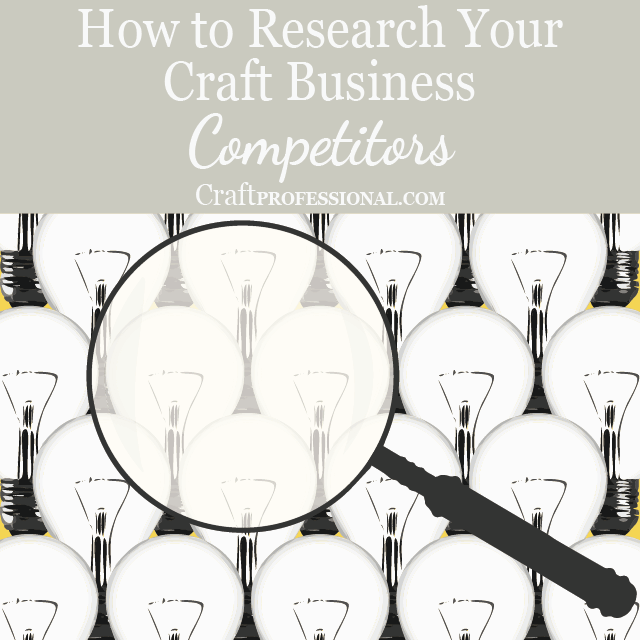
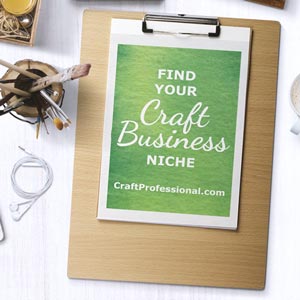


New! Comments
Have your say about what you just read! Leave me a comment in the box below.